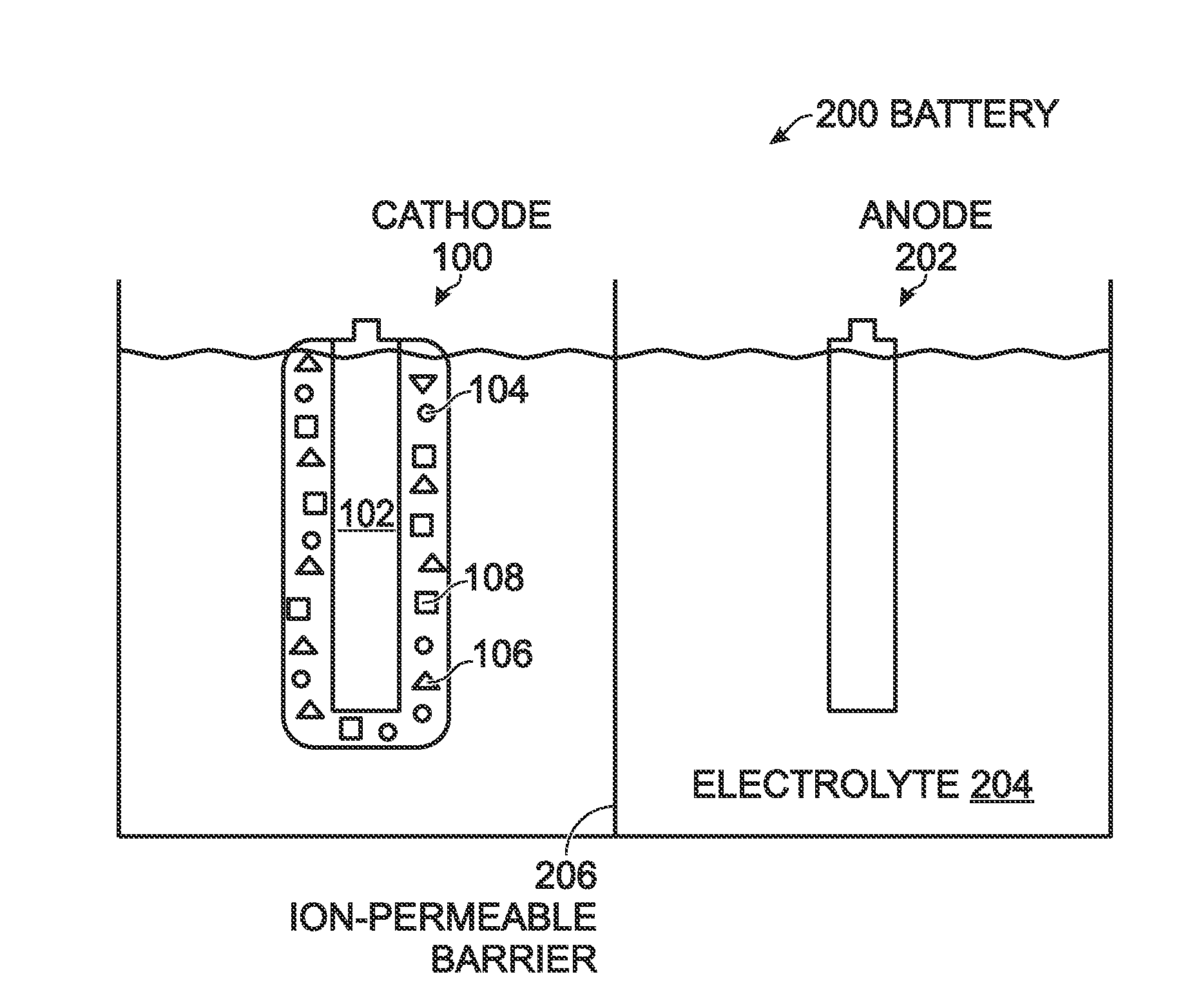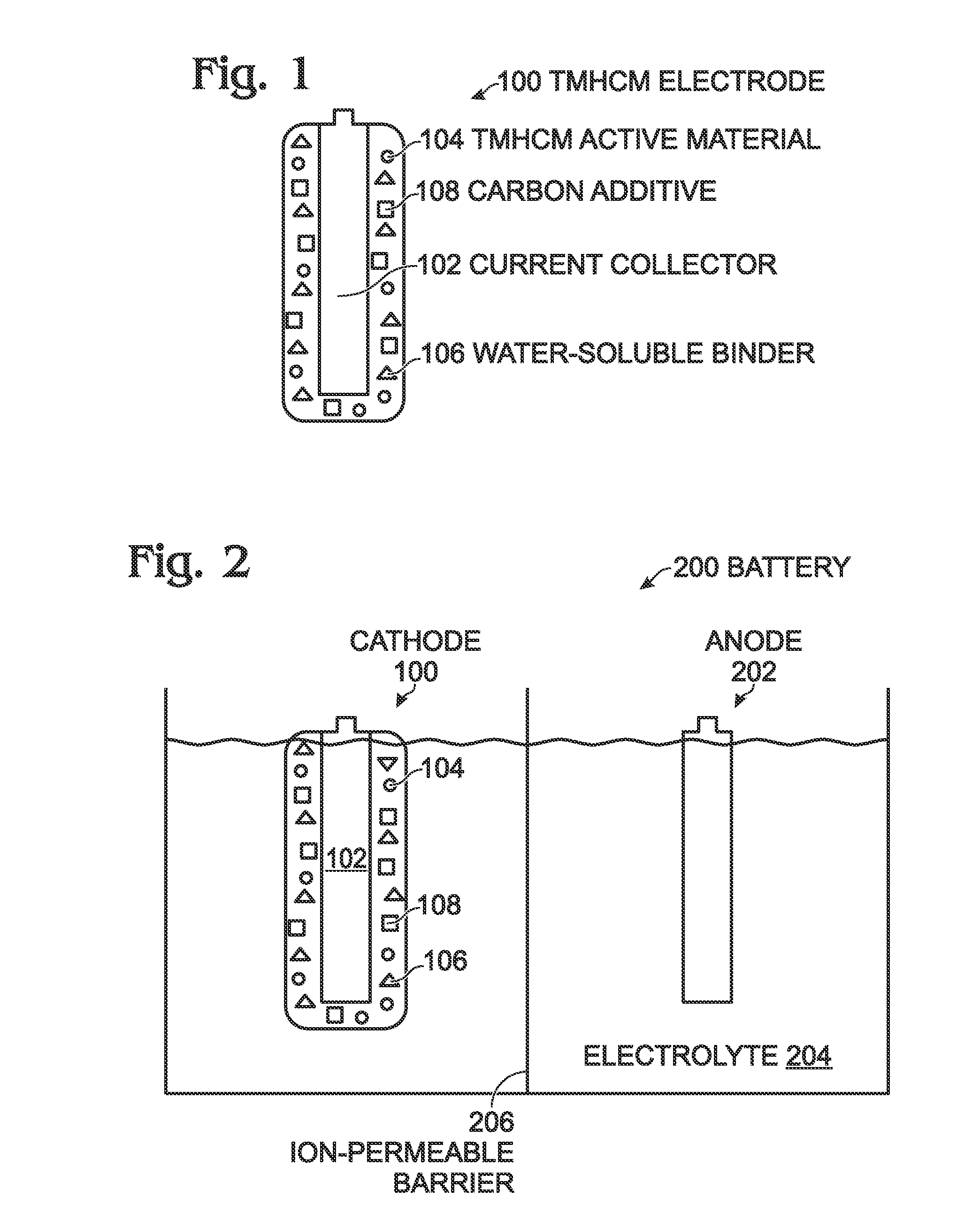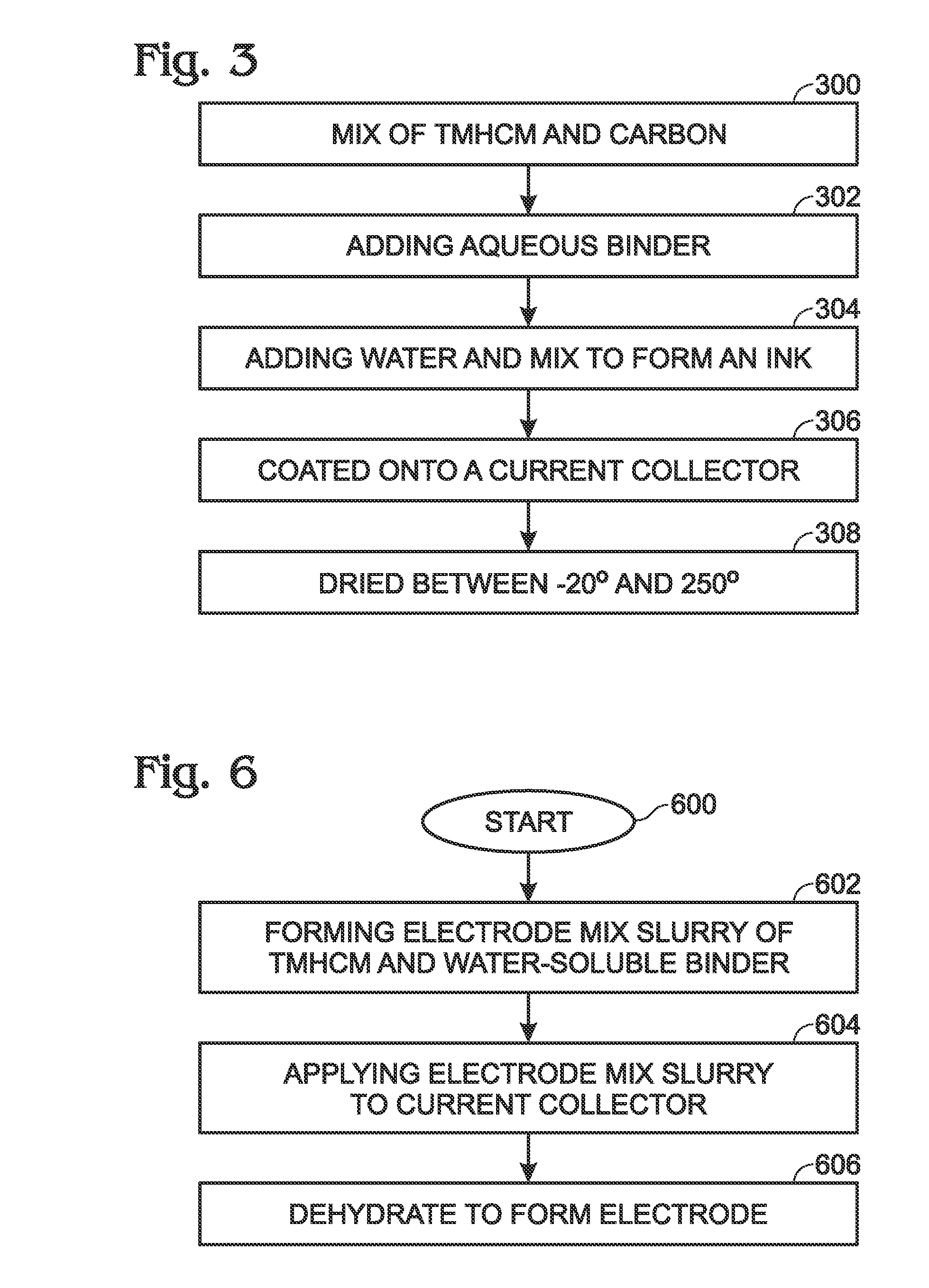Transition Metal Hexacyanometallate Electrode with Water-soluble Binder
a technology of hexacyanometallate and transition metal, which is applied in the field of transition metal hexacyanometallate electrodes with water-soluble binder and water-soluble binder, can solve the problems of high fabrication cost, harmful organic solvents, and low capacity and energy density of materials within aqueous electrolyte, and achieves the effect of low cost and high fabrication cost of conventional pvdf binder
- Summary
- Abstract
- Description
- Claims
- Application Information
AI Technical Summary
Benefits of technology
Problems solved by technology
Method used
Image
Examples
Embodiment Construction
[0051]FIG. 1 is a partial cross-section view of a transition metal. hexacyanometallate (TMHCM) electrode with water-soluble binder. The electrode 100 comprises a current collector 102, which may be a metal such as aluminum, copper, or nickel, or conductive carbon material. A TMHCM active material, represented with reference designator 104, overlies the current collector 102. A water-soluble material, represented with reference designator 106, binds the TMHCM material 104 to the current collector 102. Typically, as shown, the electrode 100 further comprises a carbon additive represented by reference designator 108. Some examples of carbon additives 108 include carbon black (soft carbon carbon fiber, carbon nanotubes, graphite, and graphene.
[0052]Some examples of the water-soluble material 106 include poly(acrylonitrile-co-acrylamide)polymer, carboxymethylcellulose (CMC), poly vinyl alcohol, polyvinylpyrrolidone, poly acrylic acid, polymethacrylic acid, polyethylene oxide, polyacrylam...
PUM
| Property | Measurement | Unit |
|---|---|---|
| thicknesses | aaaaa | aaaaa |
| thicknesses | aaaaa | aaaaa |
| thicknesses | aaaaa | aaaaa |
Abstract
Description
Claims
Application Information
 Login to View More
Login to View More - R&D
- Intellectual Property
- Life Sciences
- Materials
- Tech Scout
- Unparalleled Data Quality
- Higher Quality Content
- 60% Fewer Hallucinations
Browse by: Latest US Patents, China's latest patents, Technical Efficacy Thesaurus, Application Domain, Technology Topic, Popular Technical Reports.
© 2025 PatSnap. All rights reserved.Legal|Privacy policy|Modern Slavery Act Transparency Statement|Sitemap|About US| Contact US: help@patsnap.com



